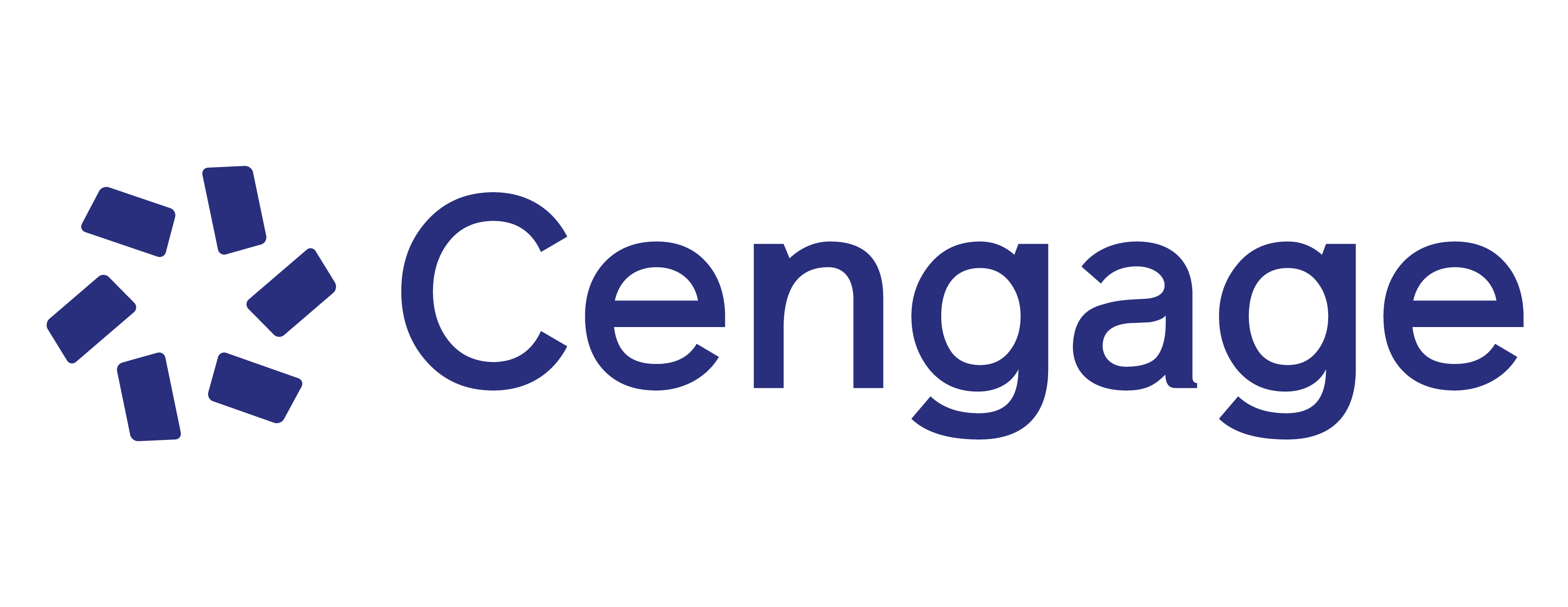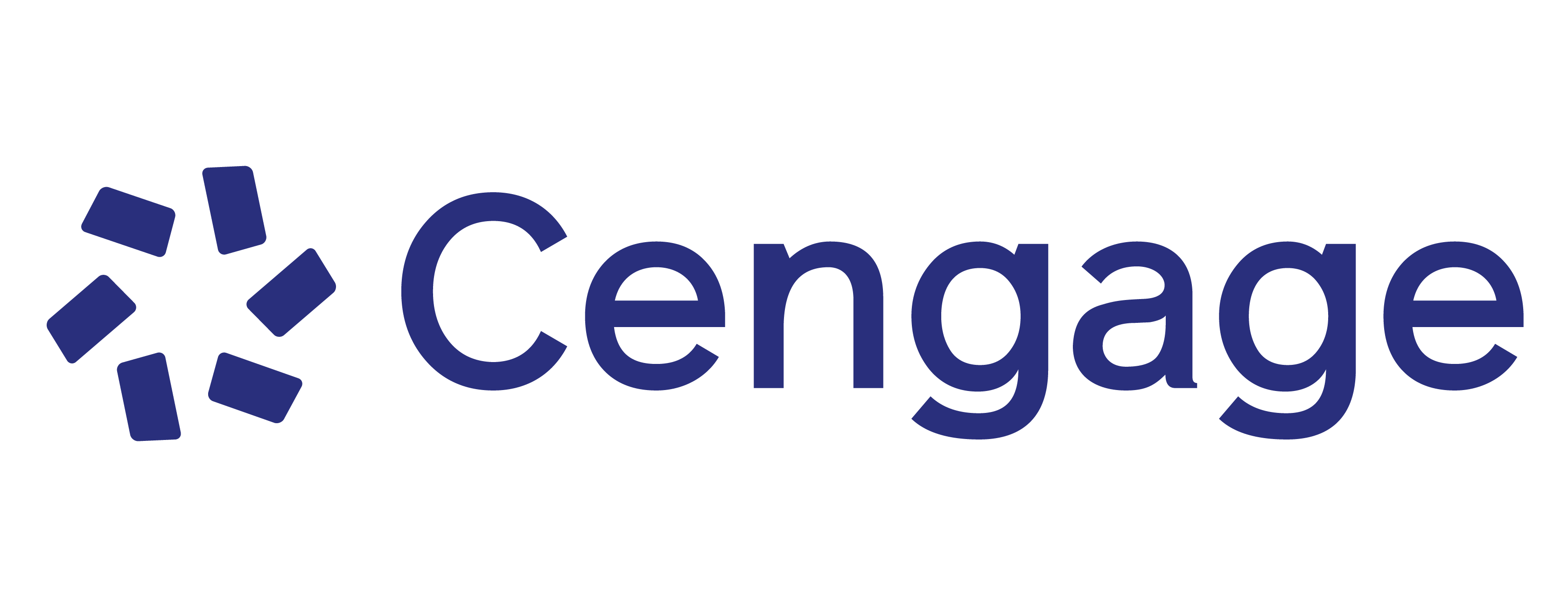Learn to think mathematically and develop genuine problem-solving skills with COLLEGE ALGEBRA, Seventh Edition. This straightforward and easy-to-use book will help you learn the fundamentals of algebra in a variety of practical ways. The book features new tools to help you succeed, such as learning objectives before each section to prepare you for what you're about to learn, and a list of formulas and key concepts after each section that help reinforce what you've learned. In addition, the book includes many real-world examples that show you how mathematics is used to model in fields like engineering, business, physics, chemistry, and biology.
Preface.
To the Student.
Prologue: Principles of Problem Solving.
P. PREREQUISITES.
P.1 Modeling the Real-World with Algebra. P.2 The Real Numbers. P.3 Integer Exponents and Scientific Notation. P.4 Rational Exponents and Radicals. P.5 Algebraic Expressions. P.6 Factoring. P.7 Rational Expressions. P.8 Solving Basic Equations. P.9 Modeling with Equations. Chapter P Review. Chapter P Test.
FOCUS ON MODELING: Making the Best Decisions.
1. EQUATIONS AND GRAPHS.
1.1 The Coordinate Plane. 1.2 Graphs of Equations in Two Variables; Circles. 1.3 Lines.
1.4 Solving Quadratic Equations. 1.5 Complex Numbers. 1.6 Solving Other Types of Equations. 1.7 Solving Inequalities. 1.8 Solving Absolute Value Equations and Inequalities. 1.9 Solving Equations and Inequalities Graphically. 1.10 Modeling Variations. Chapter 1 Review. Chapter 1 Test.
FOCUS ON MODELING: Fitting Lines to Data.
2. FUNCTIONS.
Chapter Overview.
2.1 Functions. 2.2 Graphs of Functions. 2.3 Getting Information from the Graph of a Function. 2.4 Average Rate of Change of a Function. 2.5 Linear Functions and Models.
2.6 Transformations of Functions. 2.7 Combining Functions. 2.8 One-to-One Functions and Their Inverses. Chapter 2 Review. Chapter 2 Test.
FOCUS ON MODELING: Modeling with Functions.
3. POLYNOMIAL AND RATIONAL FUNCTIONS.
Chapter Overview.
3.1 Quadratic Functions and Models. 3.2 Polynomial Functions and Their Graphs. 3.3 Dividing Polynomials. 3.4 Real Zeros of Polynomials. 3.5 Complex Zeros and the Fundamental Theorem of Algebra. 3.6 Rational Functions. 3.7 Polynomial and Rational Inequalities. Chapter 3 Review. Chapter 3 Test.
FOCUS ON MODELING: Fitting Polynomial Curves to Data.
4. EXPONENTIAL AND LOGARITHMIC FUNCTIONS.
Chapter Overview.
4.1 Exponential Functions. 4.2 The Natural Exponential Function. 4.3 Logarithmic Functions. 4.4 Laws of Logarithms. 4.5 Exponential and Logarithmic Equations. 4.6 Modeling with Exponential Functions. 4.7 Logarithmic Scales. Chapter 4 Review. Chapter 4 Test.
FOCUS ON MODELING: Fitting Exponential and Power Curves to Data.
5. SYSTEMS OF EQUATIONS AND INEQUALITIES.
5.1 Systems of Linear Equations in Two Variables. 5.2 Systems of Linear Equations in Several Variables. 5.3 Partial Fractions. 5.4 Systems of Nonlinear Equations. 5.5 Systems of Inequalities. Chapter 5 Review. Chapter 5 Test.
FOCUS ON MODELING: Linear Programming.
6. MATRICES AND DETERMINANTS.
6.1 Matrices and Systems of Linear Equations. 6.2 The Algebra of Matrices. 6.3 Inverses of Matrices and Matrix Equations. 6.4 Determinants and Cramer's Rule. Chapter 6 Review. Chapter 6 Test.
FOCUS ON MODELING: Computer Graphics.
7. CONIC SECTIONS.
7.1 Parabolas. 7.2 Ellipses. 7.3 Hyperbolas. 7.4 Shifted Conics. Chapter 7 Review.
Chapter 7 Test.
FOCUS ON MODELING: Conics in Architecture.
8. SEQUENCES AND SERIES.
8.1 Sequences and Summation Notation. 8.2 Arithmetic Sequences. 8.3 Geometric Sequences. 8.4 Mathematics of Finance. 8.5 Mathematical Induction. 8.6 The Binomial Theorem. Chapter 8 Review. Chapter 8 Test.
FOCUS ON MODELING: Modeling with Recursive Sequences.
9. COUNTING AND PROBABILITY.
9.1 Counting. 9.2 Probability. 9.3 Binomial Probability. 9.4 Expected Value. Chapter 9 Review. Chapter 9 Test.
FOCUS ON MODELING: The Monte Carlo Method.
APPENDIX A: Calculations and Significant Figures.
APPENDIX B: Graphing with a Graphing Calculator.
APPENDIX C: Using the TI-83/84 Graphing Calculator.
-
James Stewart
The late James Stewart received his M.S. from Stanford University and his Ph.D. from the University of Toronto. He conducted research at the University of London and was influenced by the famous mathematician George Polya at Stanford University. Dr. Stewart most recently served as a professor of mathematics at McMaster University, and his research focused on harmonic analysis. Dr. Stewart authored a best-selling calculus textbook series, including CALCULUS, CALCULUS: EARLY TRANSCENDENTALS and CALCULUS: CONCEPTS AND CONTEXTS as well as a series of successful precalculus texts.
-
Lothar Redlin
The late Lothar Redlin grew up on Vancouver Island, received a Bachelor of Science degree from the University of Victoria, and a Ph.D. from McMaster University in 1978. He subsequently did research and taught at the University of Washington, the University of Waterloo, and California State University, Long Beach. He was most recently Professor of Mathematics at The Pennsylvania State University, Abington Campus. His research field was topology.
-
Saleem Watson
Saleem Watson received his Bachelor of Science degree from Andrews University in Michigan. He did graduate studies at Dalhousie University and McMaster University, where he received his Ph.D. in 1978. He subsequently did research at the Mathematics Institute of the University of Warsaw in Poland. He also taught at The Pennsylvania State University. He is currently Professor of Mathematics at California State University, Long Beach. His research field is functional analysis. Watson is a co-author on Stewart's best-selling Calculus franchise.
-
NOTE: This title is also available in WebAssign with Corequisite Support that provides the flexibility to match any corequisite implementation model and empowers you to deliver high quality content at the right time for your students at an affordable price.
-
Review Material - The review material at the end of each chapter now includes a Concept Check which provides a step-by-step review of all the main concepts and applications of the chapter. Answers to the Concept Check questions are in tear-out sheets at the back of the book.
-
Discovery Projects - References to Discovery Projects, including brief descriptions of the content of each project, are located in boxes where appropriate in each chapter. These boxes highlight the applications of college algebra in many different real-world contexts. The projects are located at the book companion website www.stewartmath.com.
-
Chapter P Prerequisites - This chapter now includes Section P.9 "Modeling with Equations." This section extends the theme of the introductory section P.1 "Modeling the Real World with Algebra" on the usefulness of algebra in solving real-world problems.
-
Chapter 1 Coordinates and Graphs - This chapter has been reorganized. The chapter now begins with the coordinate plane and graphs of equations (including circles and lines), followed by sections on solving equations algebraically, and then a section on solving equations graphically. This last section shows the connections between graphs and the solutions of equations.
-
Exercises - New Skills Plus exercises in most sections contain more challenging exercises that require students to extend and synthesize concepts. Additionally, more than 20% of the exercises are new, and groups of exercises now have headings that identify the type of exercise.
-
The new Get Ready feature at the beginning of a section lets students know which previous sections they need to have mastered before starting the section.
-
Concept exercises, in addition to drill/skill exercises, vary from easy to difficult and help ensure that students are truly grasping the algebraic theories.
-
Practice What You've Learned features at the end of each example directs students to a similar problem in the exercises, allowing them to immediately reinforce the concept just covered.
-
Cumulative Reviews appear after select groups of chapters and help students gauge their progress and gain experience in taking tests that cover a broad range of concepts and skills.
-
Enhanced WebAssign allows you to assign, collect, grade, and record homework assignments online, minimizing workload and streamlining the grading process. It also gives students the ability to stay organized with assignments and have up-to-date grade information.
-
Many real-world applications show students how mathematics is used to model in fields such as engineering, physics, chemistry, business, and biology and help them relate the concepts they're studying to the world around them.
-
Focus on Modeling sections show how algebra can be applied to model real-life situations.
-
Optional, yet complete, technology applications for graphing calculators and computers appear throughout the text, giving you the flexibility to teach the course the way you want.
-
The book's new exercises vary from easy to more difficult to give you plenty of opportunities to practice—whatever your skill level may be—and ensure that you are truly grasping the algebraic theories being covered.
-
Cumulative Reviews appear after select groups of chapters, helping you gauge your progress and gain experience in taking tests that cover a broad range of concepts and skills.
-
Practice What You've Learned features at the end of each example direct you to a similar problem in the exercises, allowing you to immediately reinforce the concept you just covered.
Cengage Testing, powered by Cognero® for Stewart/Redlin/Watson's College Algebra
9781305255876
Cengage Testing, powered by Cognero® for Stewart/Redlin/Watson's College Algebra, Instant Access
9781305255869
DVD for Stewart/Redlin/Watson's College Algebra, 7th
9781305257139
Electronic Test Bank for Stewart/Redlin/Watson's College Algebra, 7th
9781305257184
Instructor's Web Site with Instructor's Guide for Stewart/Redlin/Watson's College Algebra, 7th
9781305258655
Instructor's Web Site with PowerPoint®, Image Library for Stewart/Redlin/Watson's College Algebra, 7th
9781305254374
YouBook for Stewart/Redlin/Watson's College Algebra
9781305258761
Cengage eBook: College Algebra 12 Months
9788000027616


